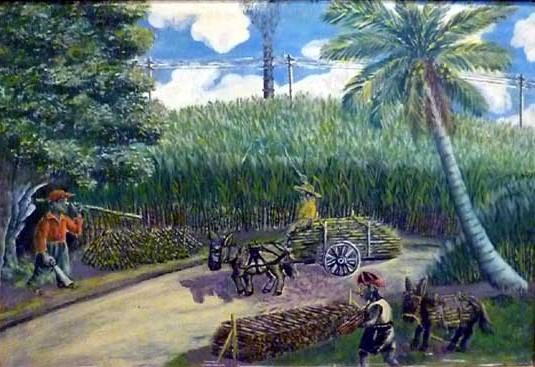Painting the city – Part 2
Last week, I shared my general concerns about the “Paint the City” mural campaign, and the emerging art district in downtown Kingston. Before we take a closer look at what the new murals may signify, we do need to recognize that the city has long been painted: Downtown Kingston has been the site of popular street art since at least the early independence years and probably much earlier. This rich legacy of street art involves imagery associated with Garveyism, Rastafari and, to a lesser extent, Revival; as well as reggae music and dancehall, shop decorations and advertisements, expressions of partisan political affiliations, community leadership and gang activities, community memorials, protest and other graffiti, and the idiosyncratic expressions of socially marginalized persons.
There was an outcry, about ten years ago, when the police started overpainting street murals that were allegedly associated with gang activities, in keeping with the prohibition on gang symbols under the anti-gang legislation. Critics countered that many of these murals were community memorials for persons who had passed away, often violently, and were not necessarily associated with gang activities. Important and entirely legitimate questions about the social erasure, the right to mourn, and freedom of expression arose. One of my students, however, shared in class that he had grown up in a garrison community and was happy to see the monumentalized images of feared community power figures removed, as he had found their presence oppressive. In addition to reminding us of the complexity of downtown communities, his comment also drove home that images have power, directly and subliminally, and can make potent, positive or negative propagandist interventions.
Street art is one of the main arenas in which a recognizably Jamaican visual culture was forged and the influence of this vocabulary is certainly evident in the new “Paint the City” murals. Some of the established downtown muralists have been involved in the production of such murals, although most are by artists from outside of the community. There is a cultural and aesthetic disconnect in many of the new murals, an artificial “rootsiness” and almost mannerist conception of what downtown Kingston street art is supposed to look like. This sense of disconnect also has to do with the cheerful “feel good” content of the murals, which is typically focused on celebrating Jamaican culture, history, and the natural environment but does not delve very deeply or provocatively into those subjects. This again raises the question about how “rooted” the mural campaign really is in the downtown community.
We need to ask what the murals are saying, who they speak for and to, and what they seek to achieve, beyond “sprucing up the place” and creating tourist attractions. There is an overly scripted quality to many of them and while the intent is obviously to make an uplifting intervention, most appear to do so in a non-committal, superficial manner that is unlikely to make much of an impact beyond visual beautification.
There are exceptions, where more idiosyncratic and authentic artistic and cultural voices have come into play, such as the humorously irreverent references to Jamaican culture in the illustrated mural, titled Jamaica Is Not a Real Place by Shanique Stewart, but generally the murals have a safe, generic quality to them. I would like to see more aesthetic diversity, more invention, exploration, and play, more interactivity and, most of all, more open, courageous, and meaningful engagement with the cultural, social, and political issues that affect downtown. But that requires for the murals to be more actively informed, and indeed directed by community concerns, and for those who commission, design and make them to be prepared to work and stand with the communities in making statements that may not be so innocuous and risk free. The time has come to have a frank and inclusive discussion on these questions, since street art can achieve a lot more, socially and culturally, than what the current mural campaign suggests.
Dr Veerle Poupeye is an art historian specialized in art from the Caribbean. She lectures at the Edna Manley College of the Visual and Performing Arts in Kingston, Jamaica, and works as an independent curator, writer, researcher, and cultural consultant.






